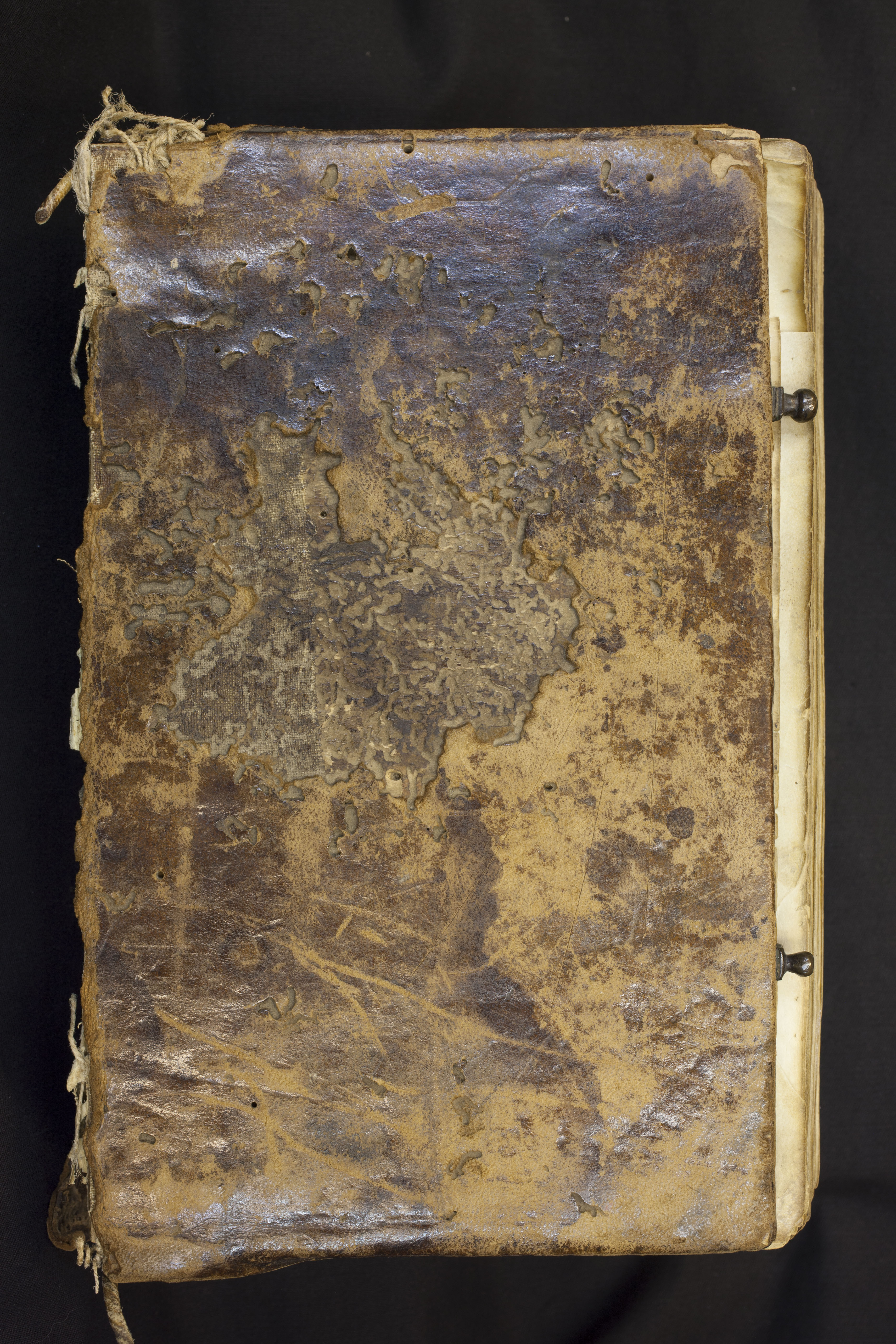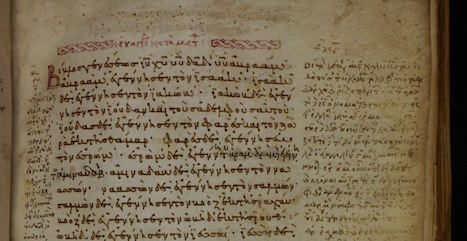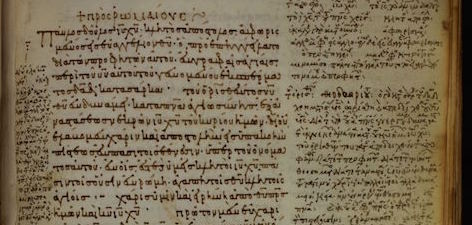The Digital Library of the Center for the Study of New Testament Manuscripts (CSNTM) contains hundreds of Greek NT manuscripts, each with its own story to tell. In our “From the Library” series, we feature individual manuscripts from our collection in order to showcase their unique beauty and importance. This is part of CSNTM’s mission to make NT manuscripts accessible for everyone.

The front cover of GA 1424
Recently, Codex 1424, a ninth-century New Testament manuscript, made major newsbecause the Lutheran School of Theology at Chicago returned the historic manuscript to the Greek Orthodox Church in a ceremony attended by His Eminence Archbishop Demetrios, Geron of America. CSNTM had the privilege of digitizing GA 1424 in 2010, preserving this important manuscript and making it available online.

The beginning of Matthew in GA 1424
Earliest Complete NT Minuscule
This manuscript holds a singular importance in the textual history of the New Testament for several reasons. First, GA 1424 is a complete Greek New Testament. Of the nearly 6,000 extant Greek NT manuscripts, only about 60 contain the entire New Testament. In addition, GA 1424 is regarded as the first complete Greek NT in minuscule text. Minuscule is a form of cursive writing that came into common use during the medieval era, beginning at about the ninth century. So this manuscript stands at the beginning of a new era and new method of copying the biblical text, a trend that would dominate until the advent of the printing press six centuries later. Finally, the Nestle-Aland critical edition of the Greek NT (the edition used by nearly all modern English translations of the NT) considers GA 1424 a “frequently cited witness” in the Gospels, meaning its readings of the Gospels were considered highly important for determining the original text of the NT.
Unique Order
Along with its importance, GA 1424 is also notable for its uniqueness. The order of the books within the codex follows an unusual pattern: Gospels, Acts, General Epistles, Revelation, and then Paul. It is highly unconventional for Paul’s letters to follow Revelation, and it is unknown why such an ordering would have been chosen.

The beginning of Romans in GA 1424, which immediately follows Revelation. Marginal commentary surrounds the text.
Commentary
In the margins surrounding the New Testament text, scribes have included commentary by ancient Christian commentators. The Gruber Collection’s description of the manuscript notes that the original scribe included commentary on Revelation by Oecumenios (sixth century), and then scribes in the twelfth century added commentary from important church fathers from the fourth and fifth centuries: Chrysostom for the Gospels, and Theodore, Severian, and Theodoret for Paul’s letters. The marginal commentary not only shows how the church’s reading was guided by earlier exegetical traditions, but the commentary also implicitly speaks of the longevity of the codex itself. We must remember that the scribes who added these commentaries were working on a document that was already 300 years old at the time. This is a testament to the craftsmanship used in making manuscripts, as well as the useful life that they had. The work that Sabas (the ninth century scribe who wrote out the NT text in GA 1424) did went well beyond his own lifetime, not only to those still using the codex in the twelfth century, but even to all of us today.
We are grateful to have had the opportunity to digitize such a unique and important manuscript. There are other interesting textual features in this manuscript including the later addition of the story of the woman caught in adultery (John 7.53–8.11) in the margin. We hope that you will enjoy viewing the rest of the codex in our Digital Library.
